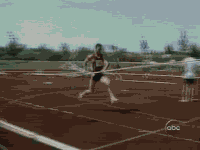Ah yes, the incredible advantage of constant bearing technique: you set up the shot first, THEN all you have to do is maneuver your boat into position. And that frequently can take a half hour.
It sure takes the time pressure off. You're only concerned with one thing at a time with no hurry. Personally, I still say unload as much workload on the machinery as possible.
What if you print your chart on an inkjet printer and a leaking periscope seal gets the paper wet. All that beautiful color ink runs for the hills and you're looking at a blank sheet of paper. Oh, nooooooooo Mr Bill!




Yes, you're right about introducing error. However AoB error is almost always less consequential than having your aiming point behind the target. The most error free technique would be to enter speed first, AoB second, then turning on the PK just before taking the stadimeter shot. Even that will have a tiny AoB error from the delay between hitting the send AoB button and hitting the send range/bearing button. The most important thing is to have the PK on before pegging the position with the stadimeter because position and speed are the most consequential errors. A 10º difference in AoB is most often inconsequential, especially if your gyro angle is less than 20º and your angle to the track is between 70º and 120º. Part of planning an effective attack is getting in the neighborhood of 90º to the track, keeping gyro angles below 20º and shooting for a torpedo track angle of about 110º (120º for a 20 knot target. We have charts for that but they're a bit hard to comprehend). Those three factors being true, you have the most error tolerant solution possible.
Errors are inevitable. Do what you can to make them inconsequential.